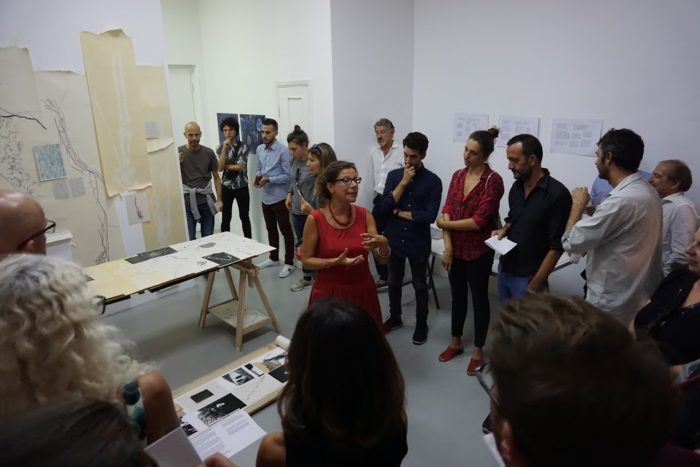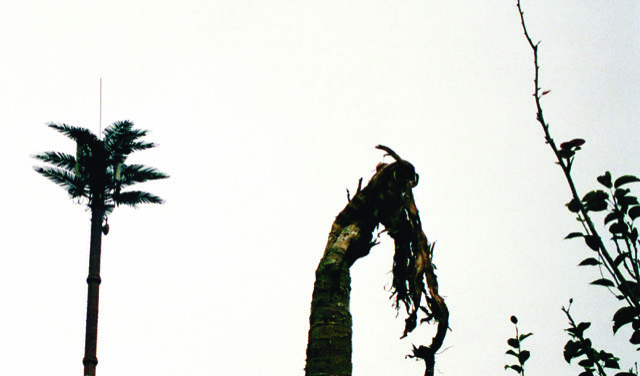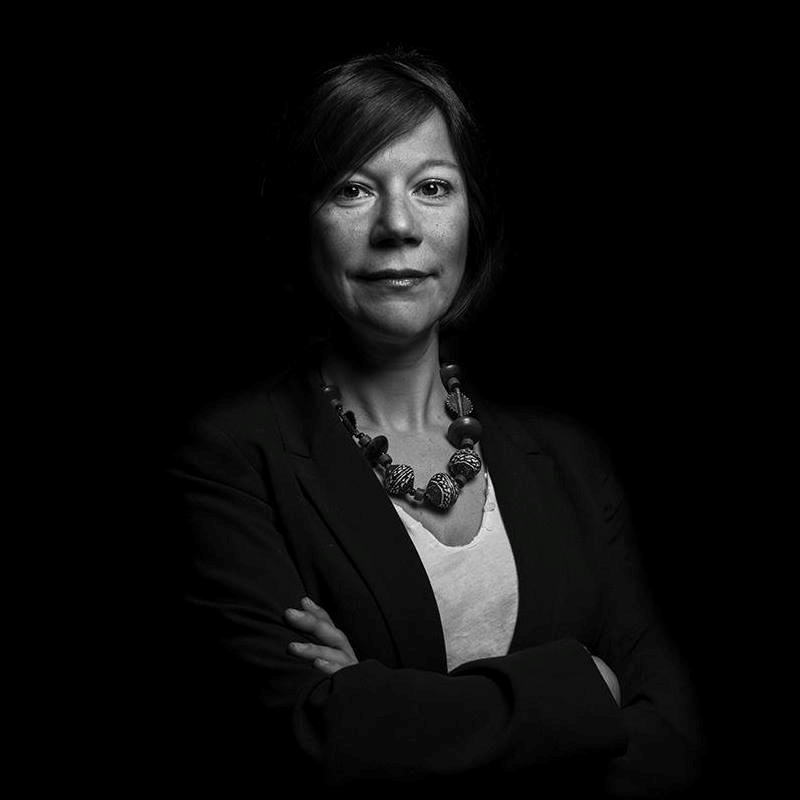
Alessia Locatelli: “To be a curator, curiosity is absolutely necessary”
#Alessia Locatelli #curator #interviewBy Irene Calvo
Portrait by ©Elisabetta Brian
Alessia Locatelli (Milan, 1977) is an independent curator who works in the organisation of exhibitions with both public and private entities, in Italy and abroad. She has managed some of the past editions of the SiFest and the Canon Award, specialising in photography, and in parallel she is developing her activity as a curator while continuing her work as a consultant for artists and photographers. She writes for some art and photography magazines and she is a critic for the Photography Dossier of the CAM (Catalog of modern art, ex-Bolaffi) published by the Editorial Giorgio Mondadori-Cairo Group.
Since 2016, Alessia has organised and taught on professional photography curating courses in photography schools and independently throughout Italy. She participates as a Folio-Reviewer in various photo festivals between Italy and Switzerland and she’s on the organisational team for Photolux Festival in Lucca, 2019 edition. She is in charge of assisting authors in the selection of Fine Art papers and materials that are useful for conservation, as well as selling to collectors. She is the artistic director of the Enrico Cattaneo’s archive and the Biennial of Female Photography in Mantua (Italy).
Alessia recently inaugurated Osmosi in Milan, an opportunity awarded to her as the winning curator of the SAC International Curatorial Residency Program in 2019.
In this interview, Alessia explains her point of view about curating, communication in the contemporary art world and the necessity of public support in artistic activities.
Since you were a child, you have been interested in art and communication. How did you come to the curating world?
I’ve always been a curious person. I believe that to be a curator, even before a passion for the visual arts, curiosity is absolutely necessary. For everything around us! It is a strong desire to explore the mechanisms of the world, combined with the ability to communicate this with words, rather than through creativity, which is the artists’ work. A curator is a professional who is able to reflect on several topics -often related to the contemporary, but not necessarily- and to explore them in depth. Working as a curator is about knowing how to find links with visual artists in their theoretical investigations or, on the contrary, knowing how to read the creative message of the artist in a critical and universal way, helping people to approach art but, at the same time, providing mechanisms to “read” the world.
What does curating mean for you?
For me, being a curator is like being an orchestra conductor. You need to know the sound of every single instrument to know when it can come in, in order to be able to have a concert that is harmonious. In this case, of course, the musical instruments are all the professionals who are involved with the curator in the creation of an exhibition: institutions or private brands, graphic designers, printers and editors, fundraisers and more. We need to know what the professional and technical characteristics are for each profession in order to build a good exhibition. But, above all, a curator has to work on concepts, and to create projects that have solid legs. I always say in my courses that “a good concept makes a good exhibition”.
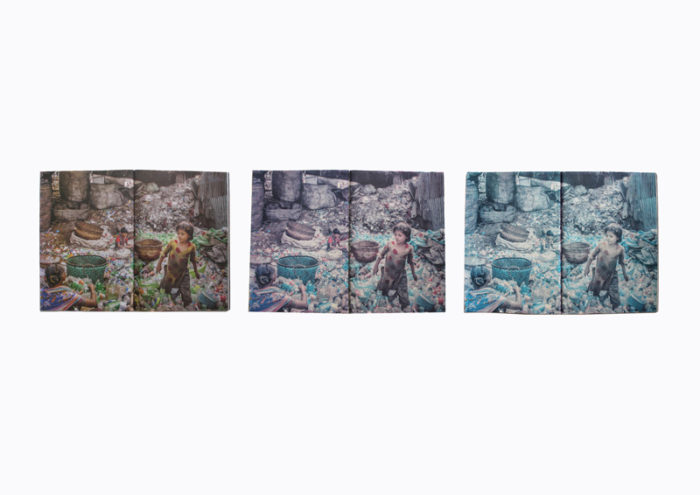
Eduardo Ruiz. “Abandoned blue”. Three copies of the National Geographic magazine in the process of photodegradation; 150x75cm; City Art, Milano, Italy 2019.
What is the essential quality, in your opinion, that a curator must have? With that in mind, is there anyone who has influenced you in the curatorial field?
I think that the curator, first of all, has to think differently, he or she has different points of view and tries to start from there to structure an exhibition. Each curatorial idea is made up of new readings, books, in-depth studies and research, and this is what makes the difference between a professional curator and those who think that, in order to be a curator, it is enough to know how to hang two straight paintings on the wall. What I like is that every historical era has curators who represent it. The curatorial figure that, in my opinion, corresponds to my era is definitely Erik Kessels. He was able to reread the whole curatorial tradition in an analytical and shocking way, playing with the old maquettes by Edward Steichen (historical curator of the MoMA photography department) and with a whole series of concepts, completely disrupting the idea of the “White Cube” 90s on which my generation was formed.
Communication is also your passion, you speak four languages, you write for an art magazine. What do you think is necessary to improve in communication in contemporary art?
I believe that having studied many languages is part of my curiosity. I like to talk, I like to know things and to ask everyone questions. Foreign languages allow you to enter into a deeper relationship with people. First of all, we need to know the rules of communication, which today are very different from before the advent of social media. Even writing in magazines is naturally part of the communicative game, it allows you to talk about your projects and those of other authors. It also offers a communication service to the artist and an additional way to support him or her. It also “spreads” the name, helping to be known and recognised as a curator. It is not easy today to communicate art through the aseptic channels of the contemporary; to critique needs time, and words that have meaning and that should be understood. Unfortunately, fast communication today is not always effective. For this reason we must always have a clear idea of what platform or communication channel we are working on and act accordingly, knowing that the communication of art happens mainly through images and, with this in mind, Instagram can be useful.
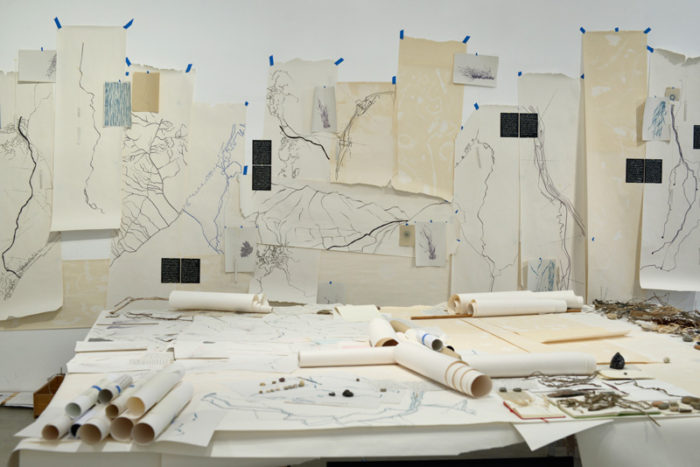
Francisco Navarrete Sitja. “The water is as the body, the body is as the riverweed, the riverweed is as the journey”. Instalación. 2018-19. ©Francisco Navarrete Sitja www.francisconavarretesitja.com
You specialise in curating photography, why is this discipline especially captivating for you?
The advent of digital technology has revolutionised photography from the technique point of view but, what concerns me are all the deep and philosophical issues. Working with photography today is a bit like living at the end of the 1800s (and the beginning of the 1900s), a period in which, from pictorialism, photography began to be a language in itself. In a time of strong cultural crisis, especially in my country in Italy, I believe that photography can be an effective means to support people’s understanding of the world and its mechanisms.
You have worked in the organisation and coordination of Italian galleries in art fairs in South Korea. According to your experience, what is your opinion about the South Korean art market?
It’s not easy to have a complete opinion on languages that do not belong to our own culture. For example, Korea has a strong tradition of visual arts and a very structured aesthetic that is divided between the traditional folk images and Fine Arts research. I think that the Korean market is becoming very interesting and that, finally, we can say that we have an independent market for collecting and selling. What I noticed in Daegu Art Fair is that a trusting relationship with the collector is fundamental. It is not enough to put on a single fair and bring a historical or interesting author to gain the favour of the collectors there. It is a relationship that must be built over time and -in a certain sense- it recalls our traditional “mecenatism”(patronage) and I believe this is a strength, for the growth of artists, that they are followed and chosen not only for their aesthetic sense but for a complete adherence to the artist’s research.
You saw the opportunity of the open call SAC International Curatorial Residency Program 2019 in Call for Curators, you applied and you were the winning curator. Could you tell us about your experience in Barcelona and the resulting exhibition that we can visit in Milan, Osmosi?
First of all, in Barcelona I participated in the jury of an important prize, the Miquel Casablancas Award, which launched great artists all over the world, including Daniel Steegmann Mangrané, who just recently opened a solo show at Pirelli Space HangarBicocca, in Milan. I was also able to work with a budget that allowed me to visit artists’ studios, to see how the Catalan artistic environment works and to select the four authors for the Osmosi exhibition, a theme chosen by me, and it can be visited in Milan until October 12th 2019.
It was a wonderful experience because it gave me a different view on public support for the arts which unfortunately is now lacking in Italy. In Barcelona, I followed with interest the support of spaces and materials -made possible by the council and private funding- for the development of a young artistic landscape with great processing capacity. I saw how the municipality of Barcelona fits into a network of European and international circuits in order to support its artists and exhibitions abroad and create an international curriculum.
Finally, imagine how nice it can be for a curator to have a budget and creative freedom to create an exhibition! With Osmosi I decided to talk about the broken relationship between Human beings and Nature. I chose four authors (Anna Irina Russell, Edu Ruiz, Francisco Navarrete Sitja and Juan David Galindo) who could bring different points of view to this osmotic relationship with nature that we are destroying. The exhibition went very well and I was honoured to have SAC representatives present during the inauguration. I think it’s very important to create exchanges and relationships within one’s own profession.
Could you briefly introduce the projects that you will be working on over the coming months?
In the next few months, I will be occupied with building the Biennial of Female Photography in Mantua, a project that will see the light for its first edition in March 2020, in the beautiful city of Lombard, already home to the Literature Festival. Moreover, I am also writing a book on my photography curating course which should be published, at least in Italian, in June.
Lastly, could you tell me some artists that you would like to work with?
I don’t like to mention names, but my desire is to always work with stimulating artists with whom it is possible to have a good professional and human relationship. Because when you have interesting human material, in addition to the creative material, exhibitions are completed and created to communicate the magic of the art to the visitor in a way that involves and excites him or her and -not least- to create the desire to visit other exhibitions, that is the ultimate goal of the curator.









